Meet Edith von K---, Our First Female Scientist 107 Years Ago!
The countless female scientists in the Johnson & Johnson Family of Companies across the world are examples of the pioneering work that women in science do every day. With so many necessary efforts underway to encourage girls and young women to study science, technology, engineering and math (referred to as STEM), women scientists are crucial role models for girls aspiring to careers in these fields. Johnson & Johnson has known that women make good scientists for a long time. Way back in 1907 or 1908, when the barriers to women in science were much higher, Johnson & Johnson hired its first female scientist – a chemist in our Scientific Department.

Let’s turn the clock back to the first decade of the 1900s. The world was a very different place: long-distance overland travel was still mostly by steam locomotive and, although automobiles were becoming increasingly more popular, the nationwide network of highways in the United States would not exist for another half century. In the U.S., the struggle for women’s suffrage had been underway since the mid-1800s, but women did yet not have the right to vote: that would not come until 1920. Many women did work out of economic necessity, and growing numbers of them pursued higher education, but the prevailing attitude of the day (which may not have matched the reality for many women) remained the Victorian mindset that women should remain in the home, not very independent, and needing to be “protected.”
According to research by the American Association of University Women, only 2.8 percent of women attended college in 1900, a number that was vanishingly small. In 1902, when our first female scientist started her freshman year of college, that number could not have been much different, and the percentage of women studying science was even smaller. The prevailing stereotype of that era was that going to college would make women into “bookworms” who would be inhibited from fulfilling what was seen then as their traditional role in society.
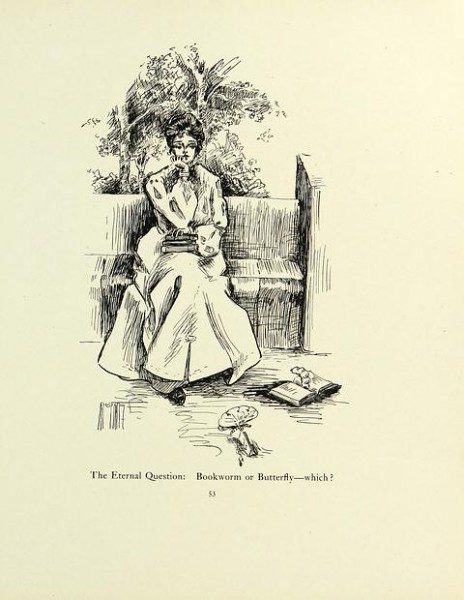
(University of Minnesota Gopher 1905 Yearbook, page 55, at this link.)
In defiance of the prevailing attitude of her day, and no doubt at risk of being considered a “bookworm,” Minneapolis resident Edith von K---- applied to and was accepted by the University of Minnesota (which had admitted women for some years) and she was a member of their 1902 freshman class. Edith didn’t study rhetoric, as many women undergraduates there did: she studied chemistry. Perhaps she was inspired by contemporary scientists like Marie Curie, who would go on to win a Nobel Prize in science in 1903 and one in chemistry in 1911.
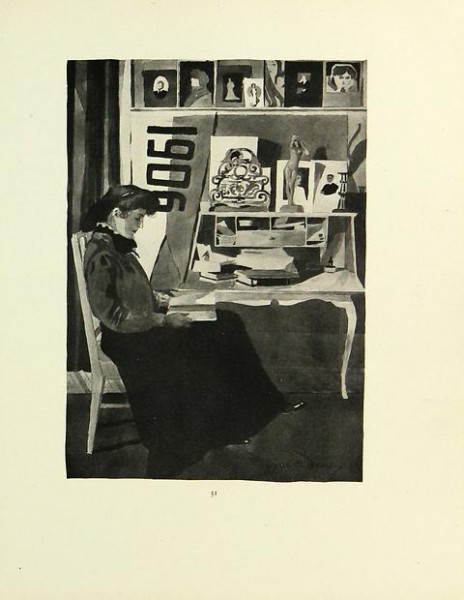
(University of Minnesota’s 1905 edition of The Gopher yearbook, page 55, at this link.)
The women in Edith’s college yearbook wore long skirts with upswept hair in the Gibson Girl style. Despite the many female students at the University of Minnesota, and despite their very visible presence in the college yearbooks, higher education in the early 1900s was still very much oriented toward men.
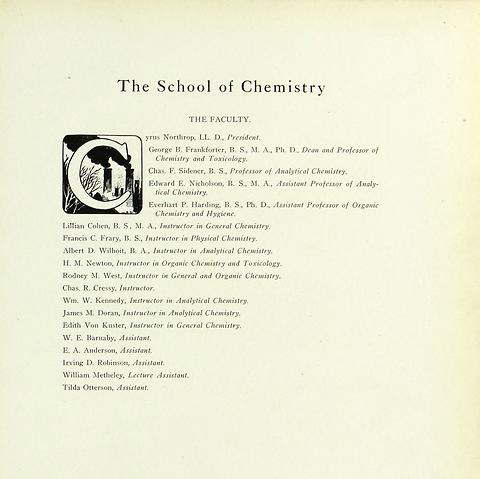
(University of Minnesota’s 1907 edition of The Gopher yearbook, page 21, at this link.)
It was in this setting that Edith von K--- pursued her degree in chemistry. She must have been good at what she did, since she was listed as first a scholar and assistant and then as an Instructor in General Chemistry in 1907. You might even say that Edith was (if readers can forgive the excruciating chemistry pun) in her element. Edith was also cited in a book as having begun research work on the halogen compounds of aluminum, work that was being continued by others in 1912-1913 when the book was published.
Edith graduated with a degree in chemistry in 1907. Shortly after that, Johnson & Johnson took what was then a tremendously progressive step and hired her as a staff scientist. (In contrast, Ellen Swallow Richards, the most prominent female chemist of the 19th century and a Vassar and MIT graduate, found that she was completely unable to get a job in industry several decades earlier.)
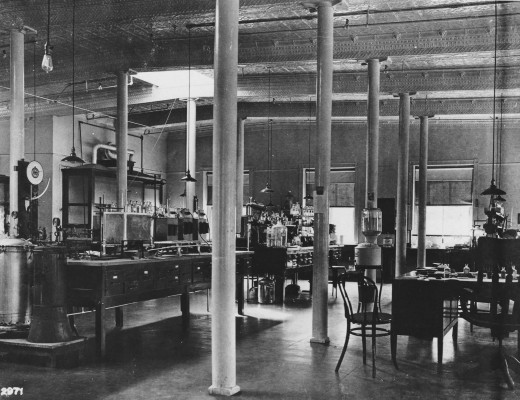
Edith left Minnesota to move halfway across the United States to New Brunswick, New Jersey to take the position at Johnson & Johnson. She likely would have traveled by railroad -- an adventurous and independent move in an era when young women traveling by train were still advised by etiquette books to keep to themselves and not accept calling cards from male travelers. Did Edith see an ad for the open position at Johnson & Johnson in a trade journal, or through her university? We don’t know, but it would be interesting to find out how she arrived at the Company. Edith would have been hired for the position by our Scientific Director Fred Kilmer, who was an early advocate for women pursuing the profession of pharmacy, so he would have welcomed our first female scientist.
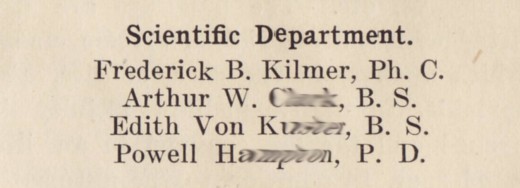
Edith von K--- is listed in the 1908 program for a reception and dance for Johnson & Johnson employees to commemorate the opening of the new addition to the Company’s cotton mill in New Brunswick. Under the heading “Executive and Superintending Staff,” she is listed as one of the four members of the Johnson & Johnson Scientific Department, working for our Scientific Director, Fred Kilmer along with two other male scientists. According to Kilmer, the Scientific Department was staffed by scientists skilled in chemistry, bacteriology, pharmacy and the “allied sciences.” In Edith’s day the department conducted scientific research, published a scientific journal for the medical and pharmaceutical profession (RED CROSS® Notes) and also oversaw the testing of raw materials and finished products. Edith and her colleagues examined and tested raw materials used in the manufacture of products, checked and tested them throughout every step of the manufacturing process, and then checked and tested the finished products.
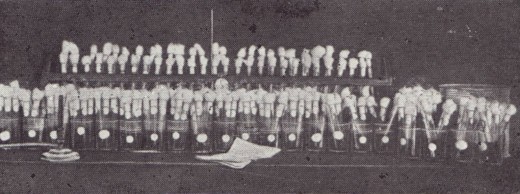
Scientific Director Fred Kilmer was an early advocate of what we now refer to as transparency, and he made sure the department’s research findings were made available for the advancement of science and the industry: “The work of Johnson & Johnson’s Scientific Department is accessible to laborers in science through a statement of its results before societies, by publication in journals, and from time to time it adds a quota to the work of lightening the labors of the pharmacopoeial committee.” .” [RED CROSS® MESSENGER Anniversary Messenger 1913, Johnson & Johnson, January 1913, Vol. V, No. 8, page 226, “Scientific Department.”]
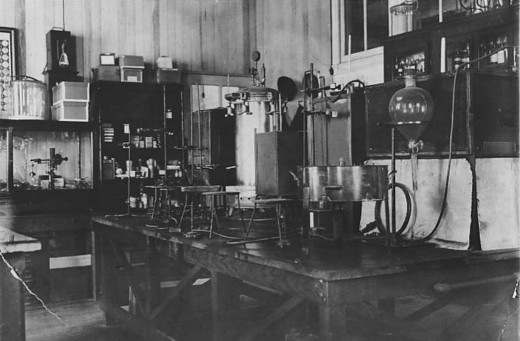
Settling in at Johnson & Johnson, Edith joined the Laurel Club, the organization for female employees, and she is mentioned in articles in the New Brunswick Times as having been involved in the community volunteer work the organization did. (As a fellow Laurel Club member, she would have known Elizabeth P---, of stained glass window fame.) In 1908, Edith was one of five delegates from the Laurel Club chosen to represent the club at a national meeting of women employee clubs in Washington, D.C., which included a reception at the White House with President of the United States Theodore Roosevelt.
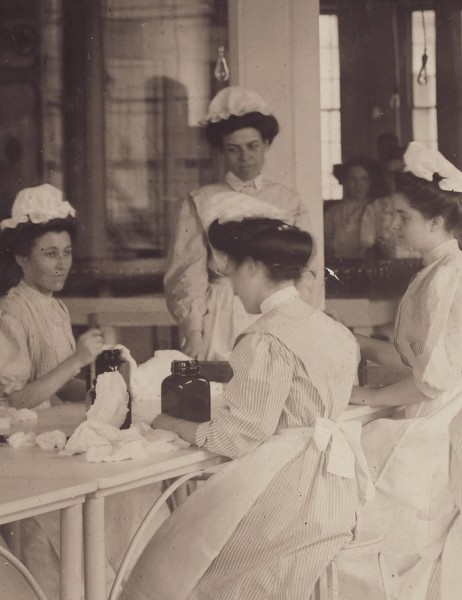
The arrival of the Company’s first female scientist – a university educated chemist from halfway across the country -- must have caused quite a splash at Johnson & Johnson. It certainly attracted the notice of the Company’s superintendent of manufacturing, W--- Johnson Kenyon, a nephew of our three founders. Kenyon, who had at least one patent to his name – for an early Johnson & Johnson public health product – struck up a friendship with Edith, which led to an engagement, which led to marriage. (By the way, Edith’s future spouse would go on to further fame in 1920 when he came up with the name for that new product invented by cotton mill employee Earle Dickson: BAND-AID® Brand Adhesive Bandages!)
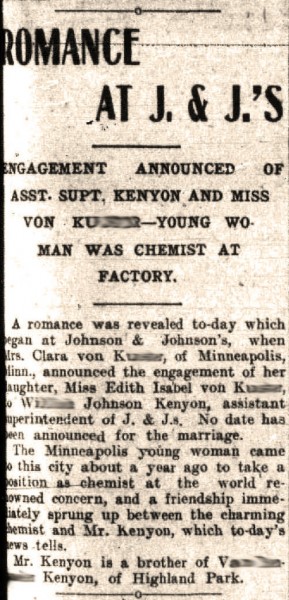
The article about Edith’s wedding mentioned that the wedding was held at her house in New Brunswick – perhaps another sign of her independent spirit. (The article can be found at this link.)
In keeping with the customs of the Edwardian era, Edith did not, unfortunately, resume her position as staff scientist after her marriage. But she remained local to New Brunswick, and no doubt she kept up with what was happening at the Company through her family and friends. As an early pioneer in earning a degree and a job in science at a time in which the barriers to women doing both were extraordinarily high, Edith would no doubt have been thrilled to see the advances made by women over the long decades of her life. And if she were able to be given a glimpse of Johnson & Johnson 107 years into the future, she would no doubt be overjoyed at seeing not only the many female scientists here, but also the many women in leadership roles. Despite her short tenure at Johnson & Johnson, Edith von K--- remains one of our pioneers as our first female scientist, and an example of the opportunities for women at Johnson & Johnson in the Company’s earliest days.
Unfortunately, neither Johnson & Johnson nor the University of Minnesota has a photograph of Edith von K---, so if any readers have a photo, we would love to see one!

GREAT ORGANISATION, GREATER HISTORY.
Hello! Thank you for this article. Edith was my great grandmother who I had the good fortune to know into my young adulthood when she passed away at 101 years of age. She was a remarkable woman with a sharp mind, a love of history and current events, and an amazing spirit. I have two of her wedding pictures, one alone and one with my great grandfather, and what I believe to be her high school graduation picture if you are still interested. My great grandfather, William Johnson Kenyon passed away a year before my birth, so I know of him mostly from her stories. She was very proud of him and spoke often of his cleverness and inventiveness. In addition to the name "band-aid", I was told he also came up with the idea for the box to house dental floss with a cutter on top because the open spool was unhygienic. Perhaps you could verify this for me. Please let me know if you have further questions. Thank you.
In reply to by Diane Jebran
Diane,
Thanks for getting in touch! I would love to know more about your great grandmother, and to see photos of her. She sounds like she was an amazing woman. Her story is incredibly inspiring to women at Johnson & Johnson. I will check the story about your great grandfather inventing the dental floss packaging, and let you know what I can find out!
Margaret
These historical facts were very helpful with my research project on project management, corporate management and business management of corporate businesses. It gives me a greater respect for Johnson & Johnson products, management and its companies.
Oh my goodness! Edith is my Great Grandmother, too! (My grandfather was her son, William, who died in WWII) I never knew very much about this side of the family. I am so grateful. I can't wait to tell my daughter about her. My girl is a girl of science, too. THANK YOU!!
A fantastic piece...well done. Edith or as we called her "Nana" was my great grandmother. As a young boy, I would happily listen to Nana tell stories of her life and times (and I'd always ask for more). Truly an amazing woman. She passed when I was a young adult and we still miss her very much to this day. Learning of her historical contributions and achievements makes her memory even more special. I be will sure to share your piece with my daughter.
In reply to A fantastic piece...well… by Anonymous
Charles, thank you for those recollections of your great grandmother! She is very inspiring to us at Johnson & Johnson, and we would love to learn more about her and locate a photograph of her, which we don't have in our archives. You can also reach out through the blog's mailbox: [email protected]
Margaret